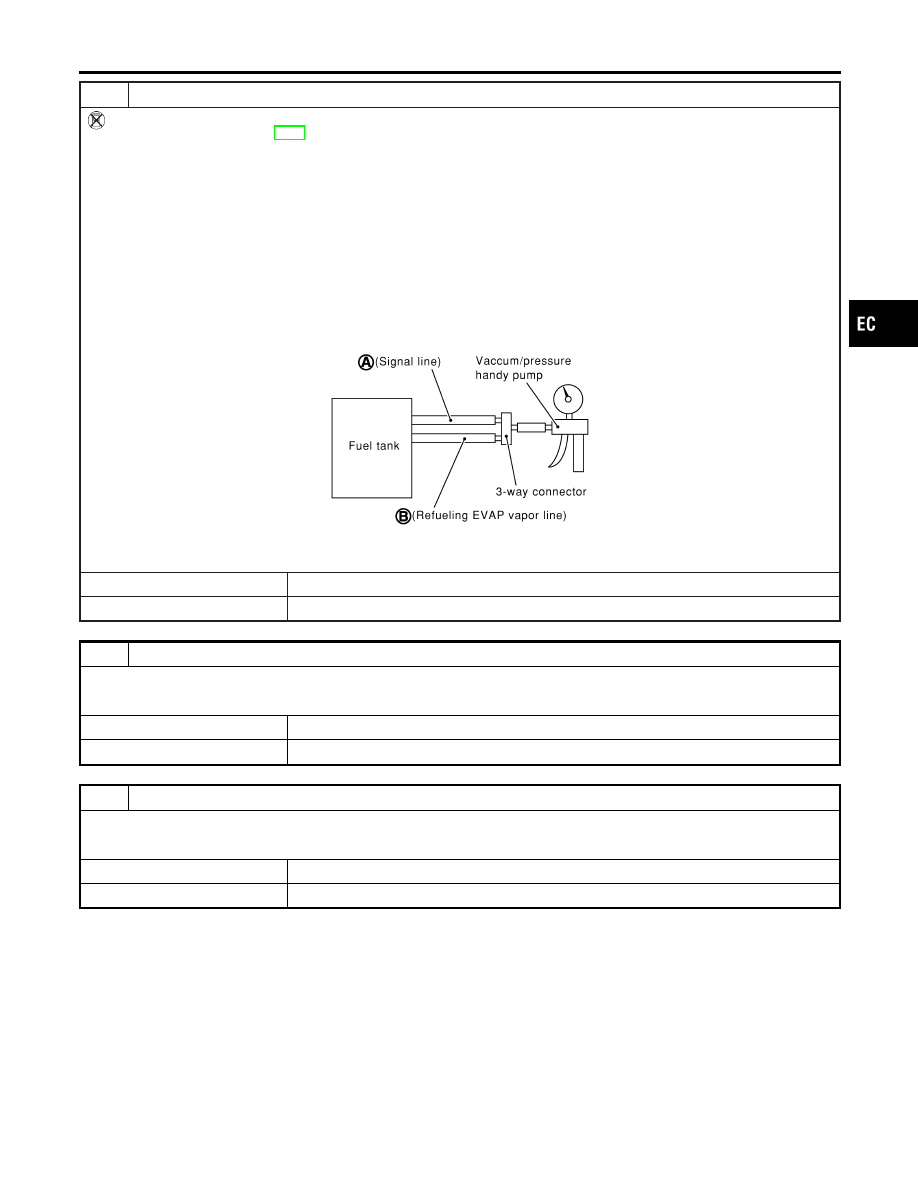Infiniti G20 (P11). Manual - part 159

10
CHECK REFUELING EVAP VAPOR CUT VALVE
Without CONSULT-II
1. Remove fuel tank. Refer to FE-5, “FUEL SYSTEM”.
2. Drain fuel from the tank as follows:
a. Remove fuel level sensor unit retainer.
b. Drain fuel from the tank using a hand pump into a fuel container.
3. Check refueling EVAP vapor cut valve for being stuck to close as follows.
Blow air into the refueling EVAP vapor cut valve (from hose end B), and check that the air flows freely into the tank.
4. Check EVAP vapor cut valve for being stuck to open as follows.
a. Connect vacuum pump to hose ends A and B using a suitable 3-way connector.
b. Remove fuel level sensor unit retainer with fuel level sensor unit.
Always replace O-ring with new one.
c. Put fuel tank upside down.
d. Apply vacuum pressure to both hose ends A and B [−13.3 kPa (−100 mmHg, −3.94 inHg)] with fuel level sensor unit
retainer remaining open and check that the pressure is applicable.
SEF968X
OK or NG
OK
©
GO TO 11.
NG
©
Replace refueling EVAP vapor cut valve with fuel tank.
11
CHECK FUEL FILLER TUBE
Check filler neck tube and hose connected to the fuel tank for clogging, dents and cracks.
OK or NG
OK
©
GO TO 12.
NG
©
Replace fuel filler tube.
12
CHECK ONE-WAY FUEL VALVE-I
Check one-way valve for clogging.
OK or NG
OK
©
GO TO 13.
NG
©
Repair or replace one-way fuel valve with fuel tank.
GI
MA
EM
LC
FE
CL
MT
AT
AX
SU
BR
ST
RS
BT
HA
SC
EL
IDX
ENGINE AND EMISSION BASIC CONTROL SYSTEM DESCRIPTION
On Board Refueling Vapor Recovery (ORVR) (Cont’d)
EC-47